Rules of American football: Understanding the rules and requirements of NFL
NFL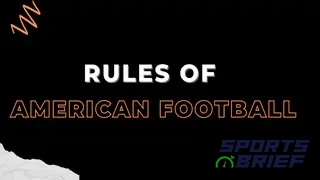
In the past years, soccer sweepers were the masters of the game and ensured that a win was guaranteed. However, with the emergence of modern football, the position has been largely left out, and as a result, it is hard to find a great sweeper in today's games. Nowadays, most coaches use a flat-back four with defensive players who can take up roles in the midfield and offer tactical assistance to the strikers.

As much as the sweeper position days are gone, their qualities, attributes, and traits are still significant, especially to the defenders. They created chances by passing the ball to the strikers or midfielders. In many nations, they are referred to as a libero.
What are sweepers in soccer? They are defensive players who serve as the last line of defence by clearing the ball after it has slipped past the other defenders. Together with the goalkeeper, they offer an extra layer of protection by ensuring the ball does not go past them.
Rules of American football: Understanding the rules and requirements of NFL
NFL
Sweepers are rarely used with the current football formations since their roles have greatly diminished. However, most clubs in Germany still use them to minimize the chances of the opponents scoring in case the ball gets past the defenders and the goalkeeper.
In football, liberos play a variety of essential responsibilities. In addition to being the final line of defence, they also need to be competent and have the ability to create opportunities for other players to pass through.
So, what does a sweeper do in soccer? Here is a detailed look at the essential duties of an efficient libero in both the attacking and defensive positions.

To cover spaces behind the defensive line. They do this by ensuring they do not leave a space behind the defenders and thus serve as a safety net to close up any openings the opponent could try to take advantage of.
What are the lacrosse rules and regulations? How to play the game
Other Sports
To anticipate goal-threatening runs from the strikers. Since they can move anywhere in the field, sweepers anticipate passes and run due to their impressive abilities to read the game and position themselves in the way of any forward runners.
To be a last-ditch interceptor and tackler. Although they run the risk of being sent off with every tackle, they have to live with the consequences. They are the last man standing that an attacker meets before taking his goal-scoring shot and thus should be patient and disciplined.
To lead in defensive communication and organisation. Liberos are expected to be good communicators who can arrange the other defenders in place while they are pressed toward their goal. They must keep their heads swivel the entire time they are on the pitch.
They recycle possession since they are primarily free and thus can avail themselves to receive passes, especially from the goalkeeper and centre-backs, and relieve pressure from them. Their technical skills can lead to counter-attacking with long diagonal passes to strikers.
What does a small forward do in basketball? The main roles of a SF explained
NBA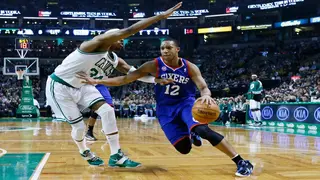

To be a deep player maker. Taking up roles such as that of a central midfielder is advantageous for a libero since, with their vision and ability to change the game, they can do wonders with the ball.
To make surging runs. With their freedom, effective timing, and element of surprise, they can make long runs with the ball and instigate instant attacks, drawing the opponents towards them and creating spaces for the attackers to score.
The responsibilities of soccer liberos have become outdated due to zonal marking, player adaptability, and game changes. Currently, the position is distributed among players rather than having one specialised player take the mantle.
They are being deployed to cover up gaps behind the defensive line and ensure no space is left behind the defenders. They also act as a safety net to block any openings the opponent may attempt to exploit.
What does a power forward do? Explaining the role of a power forward in basketball
NBA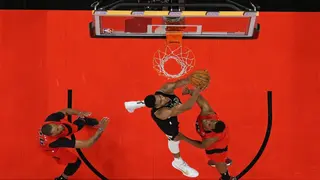
While a libero is technically a defender, the position is extraordinarily subtle and demands great expertise. Here are the qualities they should possess to dominate the game and secure wins.

How does the NBA draft work? Understanding the rules of the NBA draft
NBA
Since the libero position has been rendered obsolete in modern football, most of its great legends are from the past. Here is a list of the all-time legends who have made history playing in the position.

Without a doubt, modern football players such as centre-backs and central defensive midfielders can benefit from the skill sets of a libero. Here are the frequently asked questions about the liberos in soccer.
The libero's role has diminished since the instruction of formations such as 4-4-2, 4-2-3-1, and 4-3-3. These days, a conventional centre-back or a central defensive midfielder moves back to defend, collect and pass the ball and thus takes up the role of a libero.
Rules of rugby: How to play, the scoring system and all you need to know
Rugby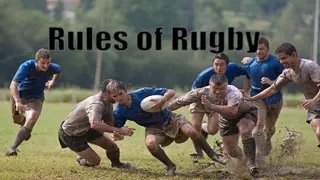
One significant reason is that the offside trap is mainly used these days. The offside trap will not be successful if a libero is used since there is always one player who will keep the opponent's attacker onside, and thus, the goalie is the only exception.
Although a libero plays like a centre-back and thinks like a defensive midfielder, they perform almost the same role. They are distinguished by initiating and creating forward moves often and making medium to long-range passes during counterattacks.
The best strategy for getting past a libero defence is by movement. Launch a broad assault that will drive him to attack the firm side, then move the attack point to the exposed weak side.

What are special teams in football and what is their purpose?
Football
A libero stands behind the defenders and in front of the goalkeeper. Usually, they form a diamond formation with defenders and can go far back as their goal line and past the midfield to help in ball possession and create chances for attackers.
Most sports pundits have credited Gyula Grosics, a former Hungary professional goalkeeper who played in the Golden Team of the 1950s, as the first sweeper-keeper in the sport's history. Additionally, Tommy Lawrence is recognised for revolutionising the goalie position.
Although soccer sweepers are rarely used in modern football, most central defenders and goalkeepers utilise most of their skills. To properly counter this technique, most teams now concentrate on gaining numerical advantage in the half of the opponents. The position, however, has become obsolete, which is a testament to how the game has changed regarding player characteristics, strategy, and rules.
What is a nose tackle in American football and what is their role?
NFL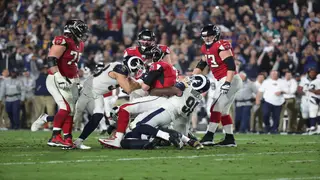
READ ALSO: All the MLS logos ranked: Which is the best logo in the MLS?
Sports Brief has recently compiled an article ranking all MLS logos. A logo is a graphic mark, emblem, or symbol used to promote and aid public identification and recognition. MLS logos are the emblems or visual representations each Major League Soccer franchise uses.
Every team in the league has its logo, which has meaning within the MLS and fulfils various tasks in line with their success over the years. Click on the link above to find out which is the best logo in the MLS.